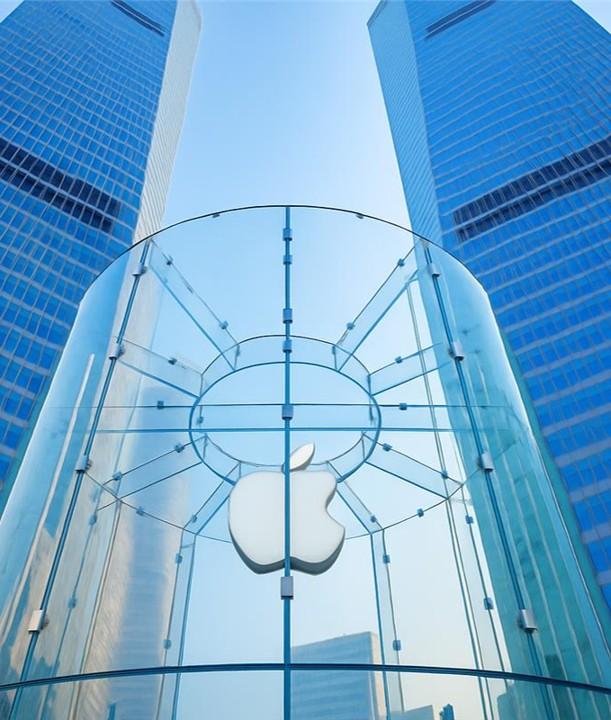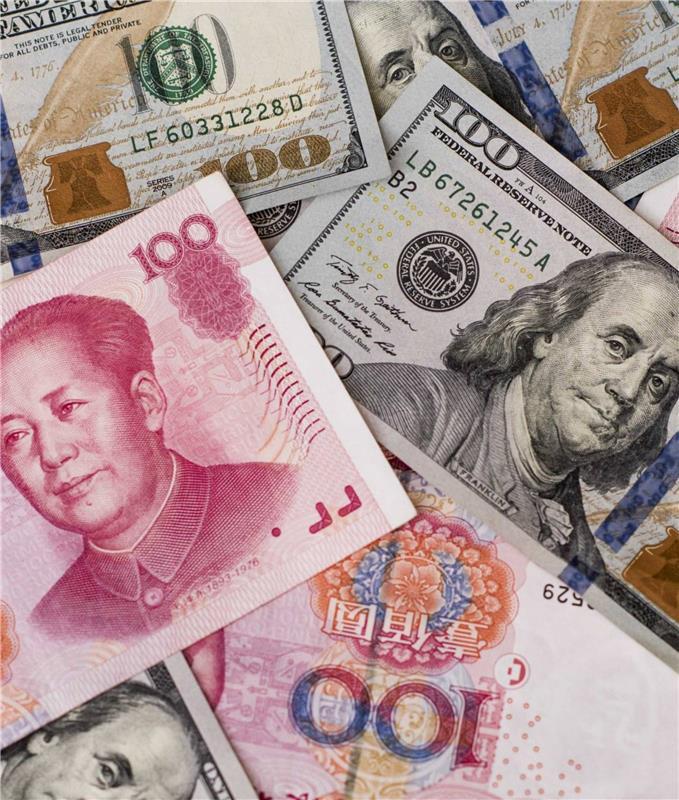How Apple explains China's trade strategy

As investors in emerging markets, we have observed that beneath the constant volatility of the ongoing trade disputes, China has been pursuing a twin strategy:
- Reducing its reliance on other countries
- Ensuring other countries become increasingly dependent on China
Rather than short-term tactics in response to the second Trump administration, these twin goals have been China’s ambition for many years, with concrete steps taken to achieve them. For investors – and especially those, such as Guinness Global Investors, focused on the individual companies held rather than the broad strokes of an emerging markets allocation – it is informative to look beneath the geopolitics and consider what this means for the real operations of firms doing business across emerging markets. There can hardly be a better example than Apple, which is not an emerging markets stock, but whose harnessing of Chinese manufacturing expertise illustrates the reality of China’s trade strategy.
China’s twin strategy
The Economist recently discussed the pursuit of China’s twin aims, reflecting the deliberate nature of this strategy under Xi Jinping:
“In 2020, [Xi] called for China to create asymmetric dependencies by ridding its own supply chains of foreign inputs, while also seeking to “tighten international production chains’ dependence on China” […] It wants other countries to depend on it without it depending on them.”
How is China reducing its reliance on other countries?
One of the main outcomes of the extensive investment under the Made in China 2025 programme (launched in 2015), has been a drive towards self-sufficiency in areas of advanced technology. In some fields, China is yet to reach the cutting edge (such as in semiconductor foundry), but it’s clear that they are quickly catching up.
How are companies becoming increasingly dependent on China?
Increasing dependency on China can be seen in the case of the recent squeeze on the rare earths supply chain. By controlling nearly the entire supply of certain materials, China has put pressure on the US and Europe in the midst of trade negotiations. However, this is a card that must be played carefully – in some cases, concessions to these controls have been offered to European customers in critical need.
What is the extent of Apple's dependence?
The excellent recent book Apple in China by Patrick McGee underlines the extent to which Apple has come to rely more and more heavily on China as a production base.
The main thesis of the book is that the increasing dependence has put Apple effectively in an unescapable position, as the subtitle (The Capture of the World's Greatest Company) makes clear. Setting aside (for now) the issue of whether Apple has become trapped, it is clear that China has benefited hugely from the relationship.
Will companies simply relocate due to the twin strategy?
The twin strategy has promoted efforts to reshore production, or to relocate outside of China. However, we argue that these efforts won’t reverse such a dominant long-term trend. This is a key area in which Apple’s experience is illustrative. Our study of the supply chains leads us to believe that Apple’s reliance on China is unlikely to diminish dramatically in the medium term; while China’s progress in technology development, if anything, will lead to a closer relationship in time.
China's manufacturing-led development
The theory of manufacturing-led development consists of two stages:
- Protecting and nurturing young/nascent industries to allow them to scale, before then…
- Unleashing them to compete on a global scale, encouraging producers to improve quality standards.
(This theory is expounded in the book How Asia Works by Joe Studwell.)
This, of course, is the path that China has been following. The following extract from Apple in China provides a vivid illustration of this latter part of the process. This section, discussing Tesla’s production in Shanghai, explains how the presence of a dominant Western brand caused a paradigm shift:
In China, this phenomenon has been referred to as the catfish effect. The idea is based on the fact that when sardines are caught at sea and placed in a tank for their journey back to shore, they become sedentary and die. However, sardines that are kept alive tend to have better flavour and texture and thus fetch a higher price. The story goes that a Norwegian fisherman discovered that if he threw a catfish into the tank, the sardines would continue swimming and fight for survival. The presence of a single predator causes the entire tank of sardines to better themselves. Beijing, it’s often said, wanted Tesla to play the role of the catfish for the EV industry.
The theory is partly misleading. It implies that Tesla simply inspires competitors to do better, but Tesla also works intimately with and improves its third-party vendors, who then supply local EV brands such as BYD. This, of course, is the Apple model, and Parikh—who played a key role in establishing the Shanghai Gigafactory—specifically hired engineers with Apple experience to set the plan into motion.
How Apple has used its engineers to upgrade their supply chain
One of the keys to Apple’s success has been the deep integration of its engineers into manufacturing processes in China, enabling the establishment of a sophisticated and extensive supply chain. This, in turn, has benefited local smartphone manufacturers, who have capitalised on the expertise and know-how, coupled with the high-quality manufacturing expectations that Apple has instilled.
McGee’s book also brings Apple’s production challenges up to date by discussing the company’s experience in India. As a result of the trade frictions between the US and China under the first Trump administration and continued under the Biden administration, Apple has sought to lessen its dependence on China by increasing the proportion of its production coming from outside the country. Mainly, this has involved increasing the proportion of assembly work done in India.
China’s cost of labour has risen
It is crucial to note that assembly work is the labour-intensive part of the production process, and China’s rising labour costs (as a result of the country’s increased prosperity) have forced manufacturers to start to look outside of China, particularly in industries where there is a high labour component to the finished goods. For example, garment manufacturing has been shifted to countries like Cambodia and Vietnam, where labour costs are lower. In addition to the trade war, an underlying structural economic dynamic has pushed production away from China, leading to relocation elsewhere.
Apple’s experience was also fundamentally coloured by the disruption caused by COVID-related lockdowns in China. This was particularly pronounced in 2022, when a wave of lockdowns imposed in China coincided with production disruptions at a time when many other countries had moved beyond using lockdowns once a COVID vaccine became available.
Apple’s challenges in India
Given Apple's involvement in creating the Chinese supply chain, where it embedded its engineers at production sites to collaborate on design and provide worker training, it is not surprising that it would seek to replicate this model in another country. However, the experience so far has presented several challenges.
Some relate to expectations from the workforce, with a greater desire among Indian workers to commute rather than be housed in dormitories, and a lack of the large-scale migration of labour in China that allows production to be scaled up rapidly. Infrastructure challenges have also existed, for example, with electricity supplies and road conditions; however, these have been significantly improved under the government of Indian prime minister Narendra Modi (and similar challenges were faced in the early days of China’s involvement).
Perhaps most importantly, there is still a cultural challenge, where the ‘do whatever it takes’ mentality that exists in China remains unparalleled at present.
Has Apple substantially reduced its dependence on China?
What is interesting about the current iPhone lineup is that for the first time, all models are being produced in India from launch (previously, it was limited to certain models within the range). Therefore, the direction of travel, as far as India is concerned, remains very positive. However, we must look beyond the assembly stage of manufacturing to examine where the broader supply chain is located. As for relocating outside of China, the process is still in its early stages.
The Indian government has been keen on promoting manufacturing within the country, and incentives are in place to encourage suppliers to establish themselves locally. But as Apple in China makes a compelling argument, it seems likely that the existing suppliers will tightly control this process. Many of the companies that set up in India will ultimately be Chinese.
Will China’s strategy succeed?
At the macro level, the development of these dependencies is clearly an area to watch, both in the short term as China negotiates on trade with the US, but also over the long term as a framework for understanding the landscape surrounding China’s continued economic development. While Apple’s efforts in India show that it isn’t truly ‘trapped’ in China, its experience suggests that relocating production is fraught and dependence on Chinese manufacturing expertise is real.
How can investors respond?
Viewing these trends through the prism of a specific company – even one not listed in emerging markets – throws useful light on ever-evolving trade relationships, but is also an important discipline for investors. In the parts of the market where we invest, our expectation is that the results of the business will ultimately be the dominant driver of returns. This requires an understanding of how the macro issues affect the actual companies invested in. When trade wars create turbulence in stock prices, this understanding can present opportunities in quality companies whose persistent return on capital suggests they continue to perform well through challenging circumstances.
Learn about the Guinness Emerging Markets Equity Income Fund
Risk: The Guinness Emerging Markets Equity Income Fund is an equity fund. Investors should be willing and able to assume the risks of equity investing. The value of an investment can fall as well as rise as a result of market and currency movement; you may not get back the amount originally invested. The Fund is actively managed with the MSCI Emerging Markets Index used as a comparator benchmark only. The Fund invests only in stocks of companies that are traded on Emerging Markets stock exchanges or that do at least half of their business in Emerging Markets, it is therefore susceptible to the performance of that region and can be volatile.
Disclaimer: This insight may provide information about Fund portfolios, including recent activity and performance and may contains facts relating to equity markets and our own interpretation. Any investment decision should take account of the subjectivity of the comments contained in this insight. This insight is provided for information only and all the information contained in it is believed to be reliable but may be inaccurate or incomplete; any opinions stated are honestly held at the time of writing but are not guaranteed. The contents of this insight should not therefore be relied upon. It should not be taken as a recommendation to make an investment in the Funds or to buy or sell individual securities, nor does it constitute an offer for sale.



